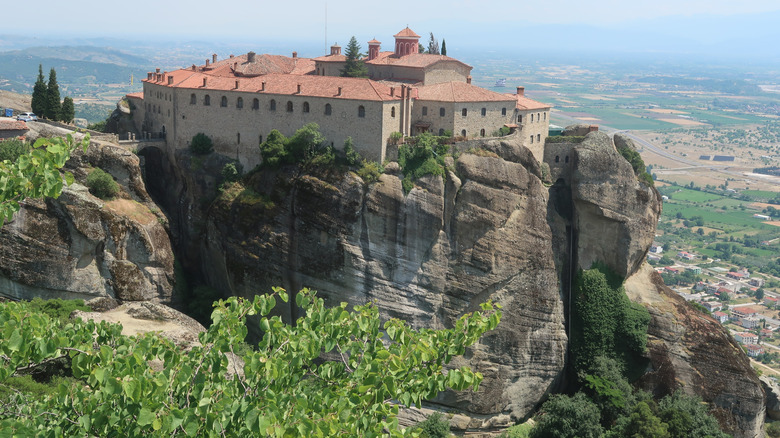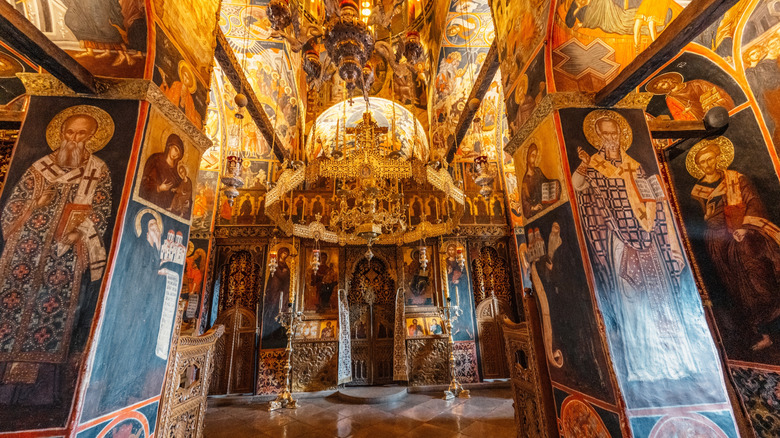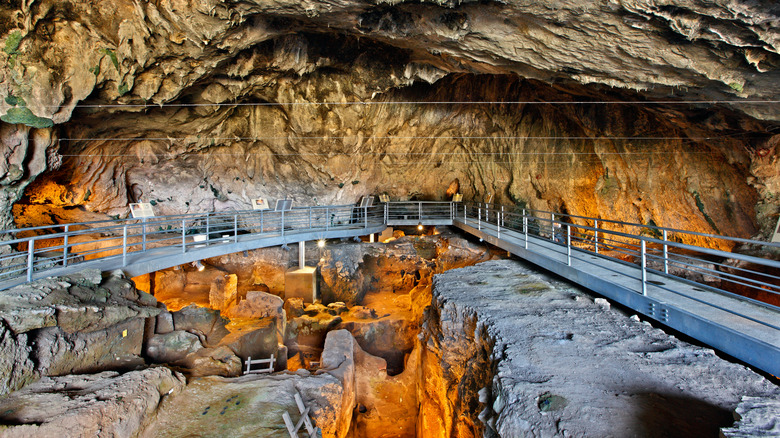
Greece is renowned for its dramatic and diverse landscapes, from sweeping mountains that plunge into the crystalline sea to rolling meadows dappled with swaying olive trees. One of the country's most unique landscapes lies in Kalabaka, situated between Athens, the iconic city with Greece's best museums, and Thessaloniki, Greece's underrated second-largest city. A millennia-old mountain town, Kalabaka is home to mystifying, magical Meteora, a complex of picturesque monasteries built across towering
cliffs riddled with ancient caves. While Kabaka is famously home to this UNESCO World Heritage Site, visitors will also be charmed by its pretty cobblestone streets, surreal sunrises and sunsets, and unique truffle-hunting opportunities.
Kalabaka has gone through several iterations, with a history that stretches all the way back to the 4th century when it was an ancient Greek settlement named Aiginion. During the Byzantine Empire, it was a bustling center going by the new name, Stagi. The town was finally christened Kalabaka under the Ottoman Empire, its name derived from the Turkish words "kale" and "bak," which mean "prestigious castle." Sadly, the Germans set Kalabaka ablaze during World War II.
Today, this town of 12,000 people nestled in the heart of central Greece is a post-war rebuild that reflects a largely modern architectural style. Adding to the allure of exploring Kalabaka's rich history is that it is relatively less crowded and cheaper than Greece's more heavily touristed areas. While the monasteries draw thousands of visitors daily, you'll find thinner crowds and lower hotel prices during the winter and in late spring before the big summer crowds arrive.
Read more: The Most 'Overtouristed' Places In Europe
Explore Meteora's Stunning Monasteries And Towering Cliffs

Although Meteora was somehow overlooked on this list of the best destinations in Greece you can't skip, these soaring monasteries are worthy of inclusion on your bucket list. Meaning "high in the heavens," Meteora is a befitting name for one of Greece's most important and largest monastic holy sites, which rises spectacularly over Kalabaka atop mesmerizing geological formations. Kalabaka's cliffs are the result of stone, sand, and mud flowing into the valley and nudging the seabed upwards. The clifftop monasteries are independent of each other, yet each one is teeming with notable artistic, religious, and architectural gems, including opulent frescoes, illuminated manuscripts, and intricate wood carvings.
Holy men began living in the caves honeycombed throughout the cliffs in the 9th and 10th centuries. Living as hermits, they were drawn to the area's serenity and seclusion. They began to form an organized monastic community in the 12th century and started work on the monasteries between the 14th and 16th centuries. 26 monasteries were originally constructed before their decline in the 17th century. Now, you can visit the six that remain open to the public for the nominal entrance fee of $3.50. Four are traditional monasteries housing monks, and the remaining pair are convents for nuns.
Visiting Meteora isn't for the faint of heart. You can drive around the cliffs to reach the monasteries, but you'll still have to climb anywhere from 140 to 200 or more steps to enter the site. The only exception is the convent of St. Stephen, which has a flat, accessible approach. There's also a strictly enforced dress code. Shoulders and knees have to be covered, and women must wear skirts or dresses. Pants are required for men, but forbidden for women.
A Pre-Historic Cave, A Byzantine Church, And The Hunt For Truffles

Beyond Meteora's breathtaking monasteries, there are plenty of other sites in Kalabaka worth seeing. You'll want to visit the Byzantine church of the Dormition of the Virgin Mary, an unmissable early Christian landmark built between the 4th and 5th centuries. Located in the town, the church has undergone numerous restorations but remains the only church in the world still showcasing its original pulpit. It's filled with remarkable 12th-century frescoes and fascinating icons, and also boasts relics from a temple of Apollo integrated into its walls.
A 15-minute drive from Kalabaka is the prehistoric Theopetra Cave, one of the oldest archaeological sites in Europe. It's a 5,400-square-foot anthropological marvel that was inhabited continuously by Neanderthals and homo-sapiens for over 130,000 years. Excavations have yielded fascinating prehistoric items like tools, pottery, burial sites, and the fossilized footprints of children. You can visit the on-site museum for a deeper look into the cave's remarkable history.
For a completely not-on-your-bingo-card experience, head to the Meteora Natural History and Mushroom Museum to arrange a truffle hunting tour. And yep -- you'll even be joined by a trained truffle dog! This unique adventure through Mother Nature explores the region's gastronomic traditions, culminating in a delicious truffle pasta tasting experience accompanied by local wines. The museum itself is also worth perusing, with over 300 exhibits dedicated to local fauna and mushroom species. The best way to reach Kalabaka from Athens is by car, with the drive taking three-and-a-half hours. You can also travel by train, with several daily, direct routes that take about four-and-a-half hours. Kalabaka is also a two-and-a-half-hour drive from Thessaloniki, and five hours by train.
Ready to discover more hidden gems and expert travel tips? Subscribe to our free newsletter for access to the world's best-kept travel secrets.
Read the original article on Islands.












